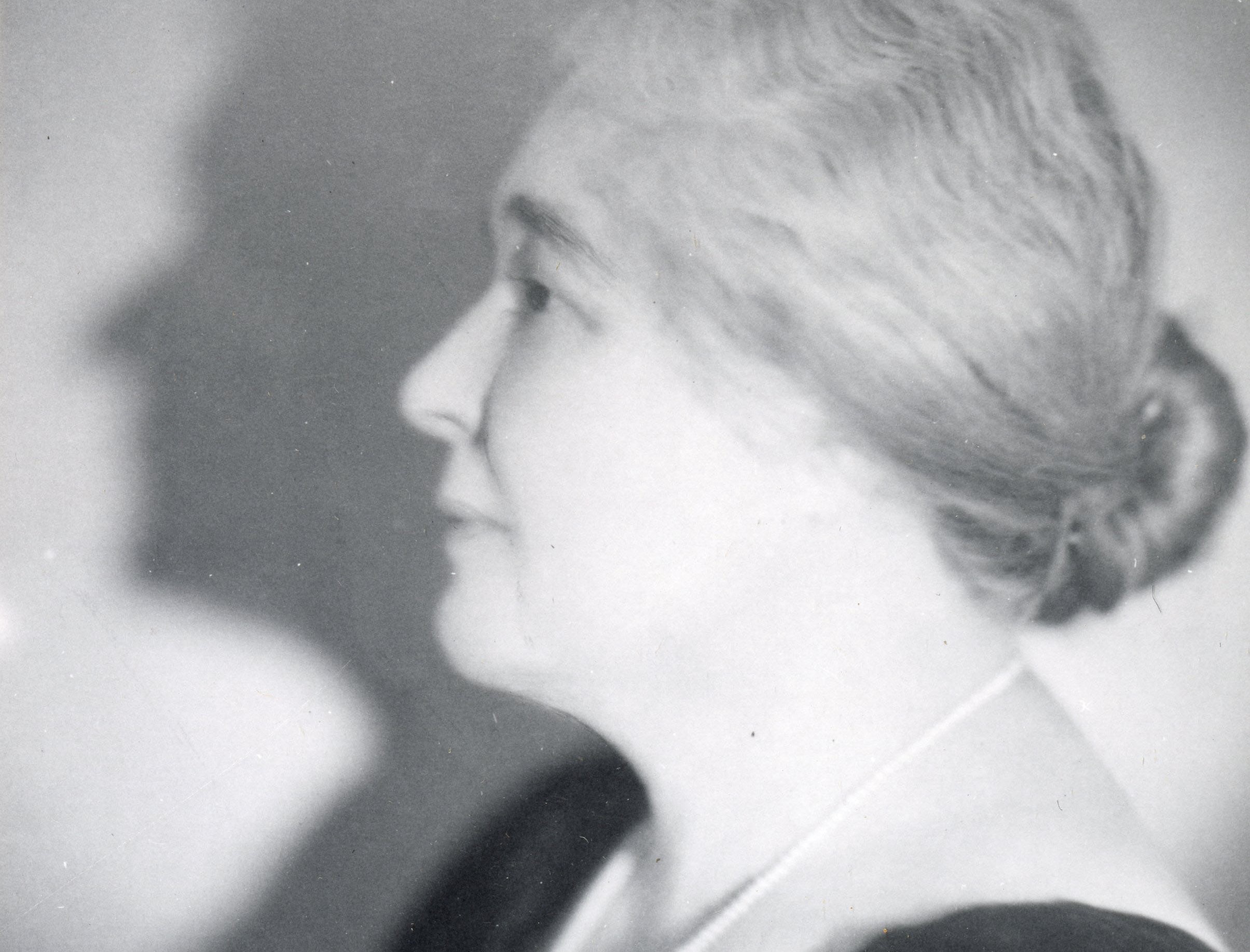In the early 1920s, a resolute woman named Maud Bowman set out to start the Edmonton Museum of Arts – today’s Art Gallery of Alberta. Bowman was a somewhat unconventional model of a female museum leader. She was not an artist and had no prior education in museum studies, nor the personal wealth to build a private art collection.[1] However, she was deeply invested in Edmonton’s arts ecosystem, and she managed to rally support for the first Canadian art museum west of Winnipeg. Her work is even more remarkable given the sexism she faced.

Robert Gallon, Welsh Hills, date unknown. Oil on canvas. Art Gallery of Alberta Collection, presented by the Fine Arts Commission Local Council of Women, 1925
Bowman was born in Cornwall, England, and immigrated to Canada around 1900, where she married David Bowman of Kitchener, Ontario.[2] The family eventually settled in Edmonton, where Bowman quickly became involved in the city’s cultural organizations while also raising her five children. She participated, for example, in the Women’s Musical Club and the local branch of the Women’s Art Association. These memberships connected Bowman to the Local Council of Women, lending her important cultural influence. She was also well-connected with the museum community beyond Edmonton and travelled regularly to conferences and meetings with other museum professionals around North America.
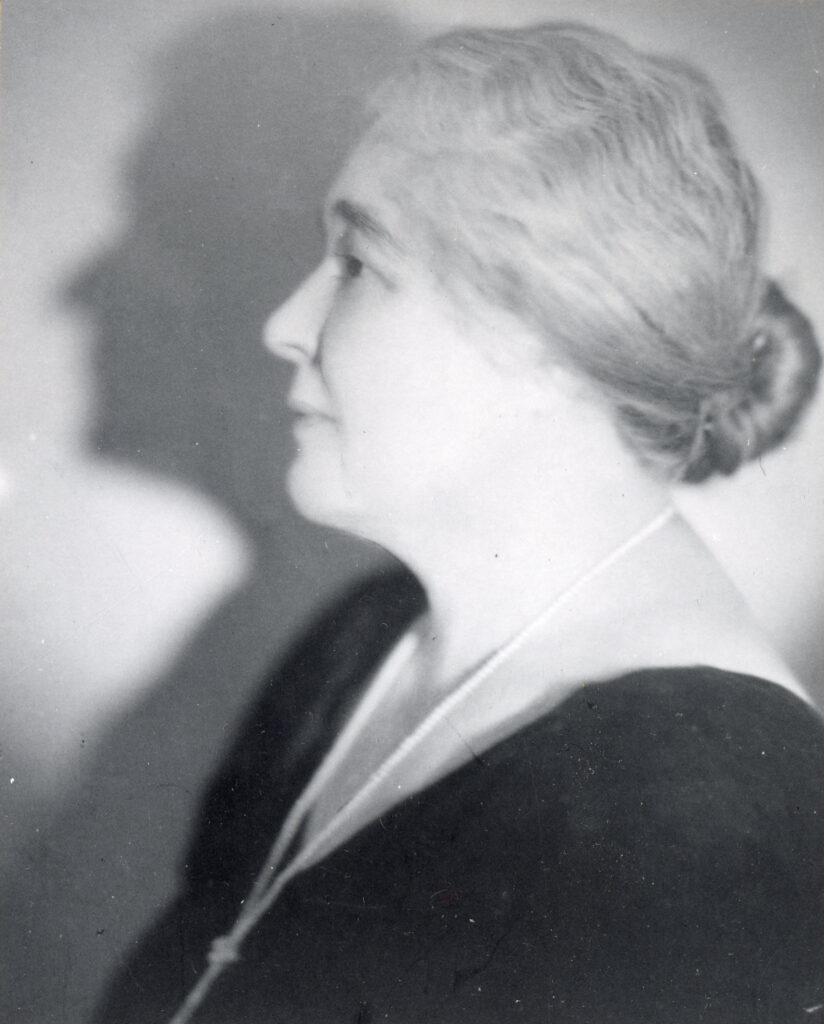
The visual arts in Edmonton were still in their infancy at the time. There were no permanent spaces for displaying or collecting art, nor was there post-secondary instruction in fine arts or art history. There were, though, a few professional artists with studios, temporary art exhibitions, and visual arts organizations. The Edmonton Art Association, for example, was formed in 1914 under the Edmonton Public School Board to offer classes in art and art history and mount annual exhibitions. In 1921, the Edmonton Art Club started bringing local artists together to critique, exhibit and sell each other’s work.
In November 1923, Bowman, representing the Local Council of Women, approached both groups with the goal of starting a museum and permanent collection to be housed in the Edmonton Public Library. After a few meetings and one public consultation, The Permanent Art and Historical Museum Association was formed with Bowman as president. The Association quickly got to work drafting a constitution and on August 18, 1924, the Edmonton Museum of Arts (EMA) was incorporated.[3] Their purpose was as follows:
The plan of operation of the association shall be to establish, own and control and to maintain museums, galleries and libraries; to acquire books, manuscripts, and scientific collections and objects of fine and industrial arts; to institute and support schools, and to provide lectures, instruction and entertainment in the furtherance of the general purpose of the Society.
This was a far-reaching mandate for an organization with no budget, building, or staff, but with optimism and hard work the Museum set forth. Maud Bowman oversaw all of the Museum’s early activities—including writing the constitution, organizing visiting artist lectures, mounting exhibitions, building an art collection and securing public space.
Their first order of business was preparing an inaugural exhibition to be held in the Hotel MacDonald’s Palm Room from October 30th to November 1st.[4] This was an ambitious show with a total of 137 artworks, including 24 paintings on loan from the National Gallery, alongside loans from local collectors and artists in the Edmonton Art Club.[5]
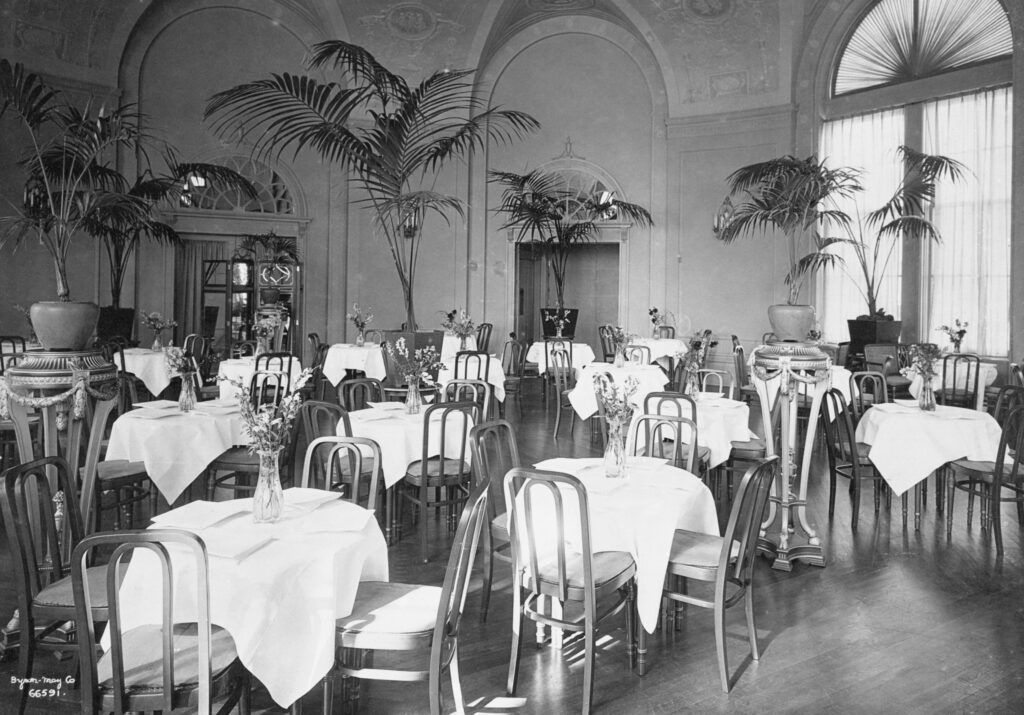
In keeping with the EMA’s mandate, the exhibition also included historical displays. One featured war relics collected by Major-General W.A. Griesbach, a veteran officer of the Second Boer War and World War I. Another showed First Nations and Inuit objects collected by Frank Wilson, a prominent officer of the Hudson’s Bay Company. Although acknowledged as “veritable masterpieces of artistic merit,” these objects were not given the same curatorial treatment as the works of ‘fine art.’[6] While the catalogue listed Canadian and European artists by name and artwork title, it lumped all Indigenous works together without mentioning their makers, cultures or time period. This contrast was a common museum practice at the time. It reinforced harmful ethnocentric and settler-colonial ideas, placing Indigenous peoples in the past and linking Western traditions with the present and future.[7]
By all accounts, the first exhibition was a great success. Over 2000 people reportedly visited the Palm Room and the ten-cent admission brought much-needed revenue to the Museum’s books. Reviewers applauded the exhibition, with one calling it “striking evidence of the cultural progress” of Edmonton.[8] After its three-day run at the hotel, a selection of works was installed across the street in the lecture room of the Public Library, where visitors could see the display for free for another six months. For the next four years, the Museum hosted an annual fall exhibition in the Palm Room and smaller displays in the library. In 1927, they moved their offices and gallery into the Civic Block.
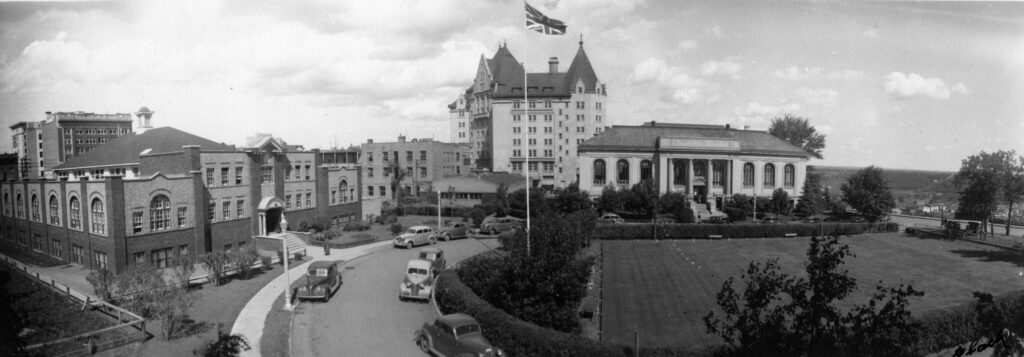
By 1929 the board realized they needed dedicated museum staff, and made Bowman the first Director. [9] From this new position, she continued to be a tireless advocate for the Museum, negotiating with the municipal and provincial governments for funding and appealing to the public for their support. Bowman was also passionate about arts education and in 1934 secured a $1500 grant from the Carnegie Corporation to start free children’s art classes.[10] These began for school children but later expanded to teens and adults, becoming one of the most successful museum education programs in the country. When the grant ran out, Bowman used her own funds to buy materials—while falling behind on her personal property taxes—and brought in volunteer teachers like her daughter, Miriam Bowman.
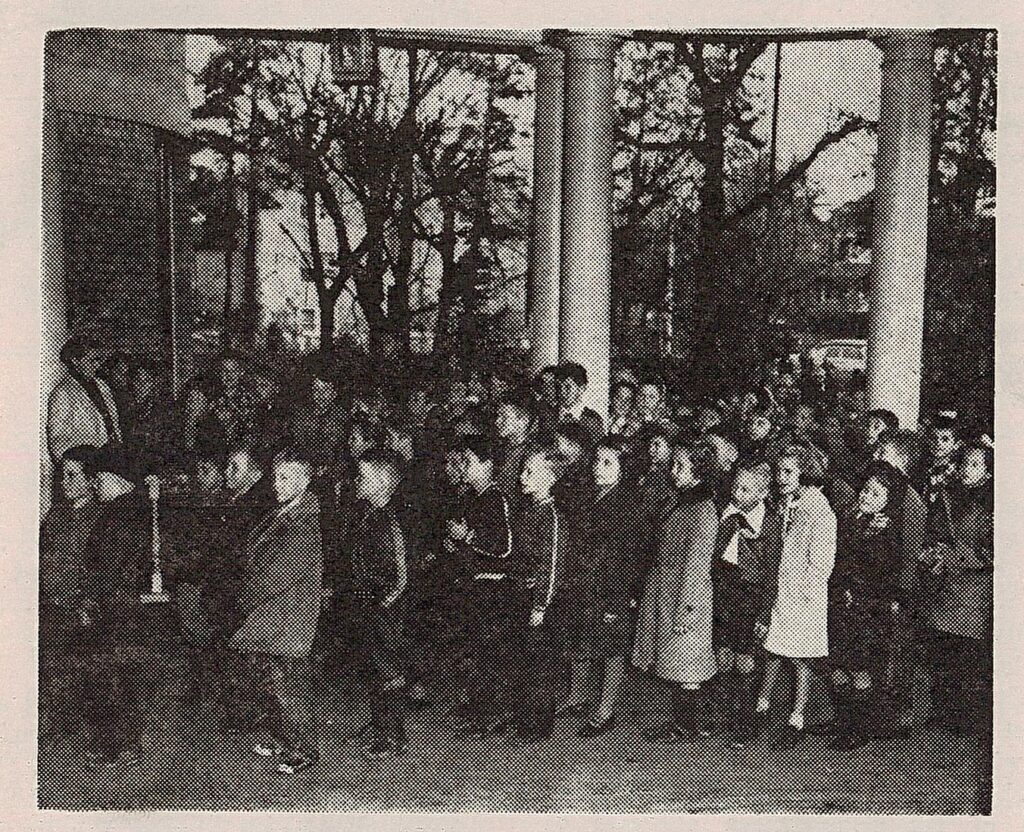
Edmonton Museum of Arts Bulletin, March 1953. Courtesy of the Art Gallery of Alberta.
Bowman was a leader who commanded respect and was known across the country. The president of the Ontario Society of Artists called her a “keen propagandist for the Canadian art in the west,”[11] and when she retired her successor said, “no credit is too great, much of the very existence of the Museum of Arts is due to her energy and single-minded determination.”[12] Yet during her tenure, the all-male board largely considered her a volunteer, and never paid her a salary. After her husband died in 1935, she expressed her financial hardships to the board only to be told that she exaggerated her situation and had three unmarried daughters who could work to support her family.[13] To make matters worse, after retiring in 1943, Bowman was replaced by the male artist and art teacher R.W. Hedley, who was paid a full-time salary.
Bowman’s labour was again undermined less than a year later when, upon her passing, local obituaries misidentified her as Curator rather than Director. 35 years after retiring, Bowman was finally recognized by the Edmonton Art Gallery with a dedicated exhibition space, and in 1992 was memorialized with a bronze bust installed on the Victoria Promenade.[14]
In 2024, as the Art Gallery of Alberta celebrates its 100th birthday, it is imperative to recognize the remarkable achievements of Maud Bowman, who through her unwavering vision and work insisted that a Museum was a worthwhile endeavour for the young city and saw it through its first challenging two decades. Her legacy lives on in all of the Gallery’s activities, from its permanent collection to its robust education program.
[1] Anne Whitelaw, “Professional/Volunteer: Women at the Edmonton Art Gallery, 1923-70,” in Rethinking Professionalism: Women and Art in Canada, 1850 – 1970, ed. Kristina Huneault and Janice Anderson (McGill-Queens University Press, 2012), 359.
[2] The city was then known as Berlin. Anne Whitelaw, Spaces and Places for Art: Making Art Institutions in Western Canada, 1912-1990 (McGill—Queen’s University Press, 2017), 22.
[3] The Edmonton Museum of Arts became the Edmonton Art Gallery in 1956 to better reflect its focus on the fine arts. In 2001 it changed its name again to the Art Gallery of Alberta. The signatories of incorporation included John Imrie, managing editor of the Edmonton Journal; John MacDougall, financier; R.B. Wells, medical doctor; Lucien Dubuc, judge; and Bowman, who was listed on the document as “married woman.” “Edmonton Museum of Arts Minutes, 1924-28,” Edmonton Art Gallery fonds, series 5, file 1, City of Edmonton Archives.
[4] Now the Wedgewood Room.
[5] In 1913, the National Gallery of Canada started a generous national lending program. Most art galleries and associations across the country relied on NGC loans in their early days before they had their own permanent collections.
[6] Edmonton Museum of Arts, Loan Exhibition catalogue, 1924, unpaginated.
[7] A few days before the exhibition, the Edmonton Residential School officially opened with a gala celebration. Thus, at the same time that the Museum was celebrating Indigenous material culture, young people in Treaty 6 were being forcibly removed from their families and dispossessed of their culture, language and ceremonies. https://thechildrenremembered.ca/school-histories/edmonton/
[8] “The Art Loan Exhibit,” Edmonton Journal, October 31, 1924, 4.
[9] Bowman remained the only female director until Virginia Stephen was hired in 2000.
[10] Since the early 1910s, the Carnegie Corporation of New York has helped fund educational and cultural programs across the United States and around the world. In Edmonton, the first public library (1923) was funded in part by Carnegie, as was an adult education program at the University of Alberta that resulted in the establishment of the Banff School of Fine Arts (1933).
[11] Whitelaw, “Professional/Volunteer,” 361.
[12] R.W. Hedley, “The Edmonton Art Gallery: A Capsule History,” 1969, unpaginated.
[13] Whitelaw, “Professional/Volunteer,” 362.
[14] The Bowman Gallery was unfortunately closed when the old Edmonton Art Gallery was demolished to make way for the current building. The bust is accompanied by a plaque that incorrectly spells Bowman’s first name with an added “e” at the end. I have seen Bowman’s name spelled as both “Maud” and “Maude” in a variety of historical sources, but analysis of her signature confirms the former.

